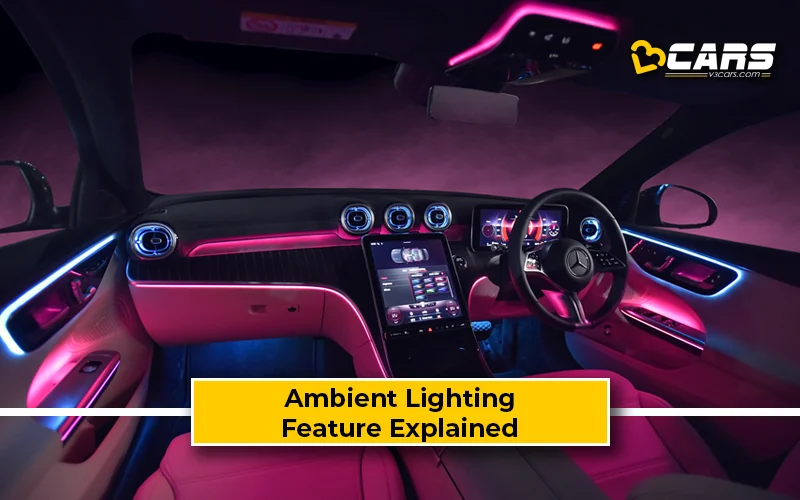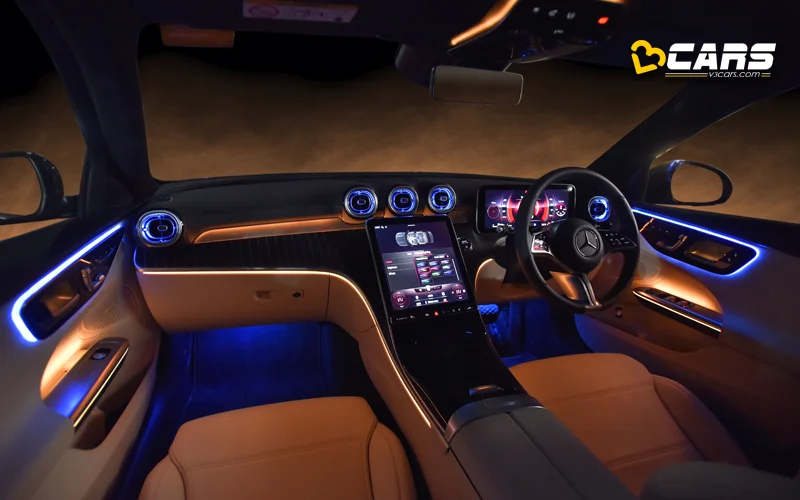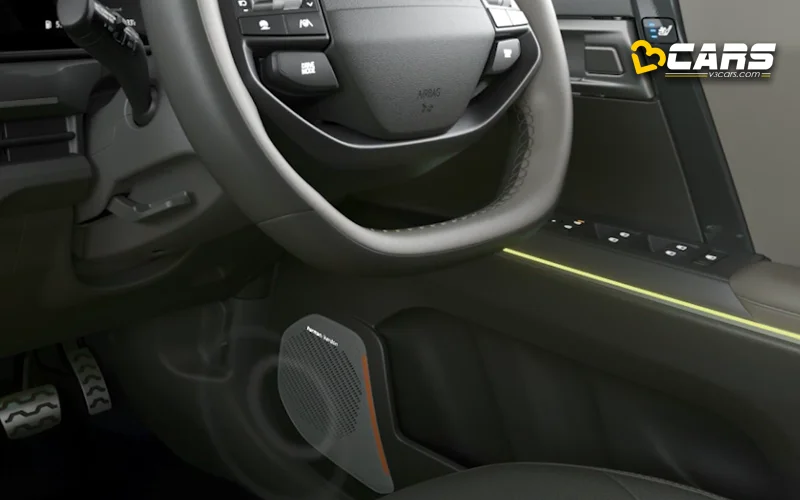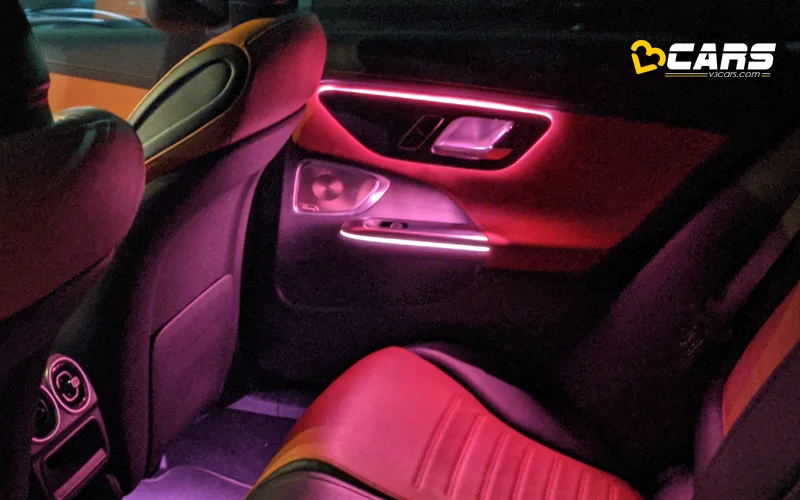Ambient Lighting – Feature Explained
Ambient lighting has become a popular feature in modern cars, adding a touch of sophistication, personalisation, and even safety to the cabin environment. More than just illumination, it’s about creating an atmosphere. Let’s explore the different types of ambient lighting you might find in vehicles today.

What Is Ambient Lighting In Cars?
Ambient lighting refers to subtle, indirect lighting integrated into a car’s interior. Unlike the main cabin lights used for visibility, ambient lighting is designed to enhance the aesthetic appeal and create a specific mood or ambiance. It’s typically low-intensity and strategically placed to highlight design elements and create a comfortable and inviting atmosphere, especially during nighttime driving.
What Are The Different Types of Ambient Lighting In Cars?
While the general goal is similar, ambient lighting manifests in various forms and locations within the car:
- Mood Lighting: This is the most common type of ambient lighting. It usually involves thin strips of LED lights integrated into the dashboard, door panels, center console, and sometimes along the edges of the seats. The color and intensity of mood lighting are often adjustable by the driver, allowing for personalisation to match their preference or mood. Some systems offer a static single color, while more advanced ones provide a spectrum of colors and dynamic modes.
- Kia’s Sound Mood Lighting (Reactive Ambient Lighting): Some manufacturers, like Kia, have taken ambient lighting a step further with systems that react to sound. “Sound Mood Lighting” typically uses the car’s audio system to pulse, change color, or vary intensity in sync with the music being played. This creates a more dynamic and engaging sensory experience within the cabin.
- Footwell Lighting: As the name suggests, footwell lighting illuminates the areas around the driver and passenger footwells. This can serve both aesthetic and practical purposes. A soft glow can enhance the cabin’s ambiance, and it can also subtly improve visibility of the foot pedals and floor area, particularly in darker conditions.
- Accent Lights: These are smaller, more focused lights used to highlight specific design features or elements within the car’s interior. This could include illuminating door handles, speaker surrounds, storage compartments, or the outline of the infotainment screen. Accent lights are often less prominent than mood lighting strips but contribute to the overall sense of detail and sophistication.
How Does Ambient Lighting Work?
Ambient lighting systems typically utilise small LED (Light Emitting Diode) units. LEDs are energy-efficient, long-lasting, and can produce a wide range of colors. These LEDs are integrated into the car’s wiring system and are controlled by the vehicle’s central electronic control unit. The driver can usually adjust the color, brightness, and sometimes the dynamic modes through the car’s infotainment system or dedicated controls.
What Are The Pros Of Ambient Lighting?
- Enhanced Aesthetics: Ambient lighting significantly elevates the interior ambiance, making it feel more premium, modern, and inviting, especially at night.
- Personalization: The ability to customise the color and intensity allows drivers to create a cabin environment that reflects their personal style and mood.
- Reduced Eye Strain: Soft, indirect lighting can reduce the contrast between the bright exterior and the dark interior at night, potentially reducing eye strain for the driver.
- Improved Visibility: Footwell lighting and accent lights can subtly improve visibility of key areas and controls within the cabin without being distracting.
- Increased Sense of Luxury: Ambient lighting is often associated with higher-end vehicles and can contribute to a more luxurious and sophisticated feel.
- Safety (Indirectly): Subtly lit interiors can make it easier to locate controls and items without needing to switch on brighter cabin lights, which can temporarily impair night vision.
What Are The Cons Of Ambient Lighting?
- Potential Distraction: If set too bright or with overly dynamic or distracting patterns, ambient lighting could potentially divert the driver’s attention.
- Increased Electrical Load: While LEDs are energy-efficient, adding multiple light sources does increase the overall electrical load on the vehicle, albeit minimally.
- Added Complexity and Cost: Integrating ambient lighting systems adds complexity to the car’s wiring and electronics, which can increase manufacturing costs and potentially repair costs.
- Subjective Appeal: While generally popular, some individuals might find ambient lighting unnecessary or even distracting.
Can Ambient Lighting Be Fixed From The Aftermarket?
Yes, ambient lighting can be added or upgraded in the aftermarket. Numerous LED strip kits and modules are available that can be installed in various parts of the car's interior. However, the complexity and integration level can vary greatly:
- Basic LED Strips: Simple adhesive LED strips powered by the car’s 12V socket can be easily installed for a basic ambient lighting effect. These often come with a remote control for colour and brightness adjustments.
- Integrated Kits: More sophisticated aftermarket kits are designed to be wired into the car’s electrical system and can offer better integration, more control options (often mimicking factory systems), and a cleaner look. Installation of these kits can be more complex and might require professional assistance.
- Footwell Lighting Kits: Specific kits are available for adding illumination to the footwells.
What Is The Cost Of An Aftermarket Ambient Lighting Kit?
The cost of an aftermarket ambient lighting kit in India can range significantly:
- Basic LED Strips: Rs. 300 to Rs. 1,500.
- More Integrated Kits with Multiple Zones and Controls: Rs. 2,000 to Rs. 8,000 or more.
- Professional Installation Charges: Rs. 500 to Rs. 2,000 or more, depending on the complexity of the installation.
What Are Some Affordable Cars In India That Offer Ambient Lighting?
Ambient lighting is no longer exclusive to luxury vehicles and can be found in several affordable cars in India, often in higher trims:
- Hyundai i20
- Kia Sonet
- Tata Nexon
- Maruti Suzuki Fronx
- Mahindra XUV300
- Renault Kiger
- Nissan Magnite
The availability of ambient lighting often depends on the specific variant and model year. However, its increasing presence in the affordable segment highlights its growing popularity among Indian car buyers.
Note: Check your Car EMI with our - Car Loan EMI Calculator
You can use our Fuel Cost Calculator to see how much any petrol, diesel or CNG car will cost to run based on the latest fuel price in your city.





0 Comments